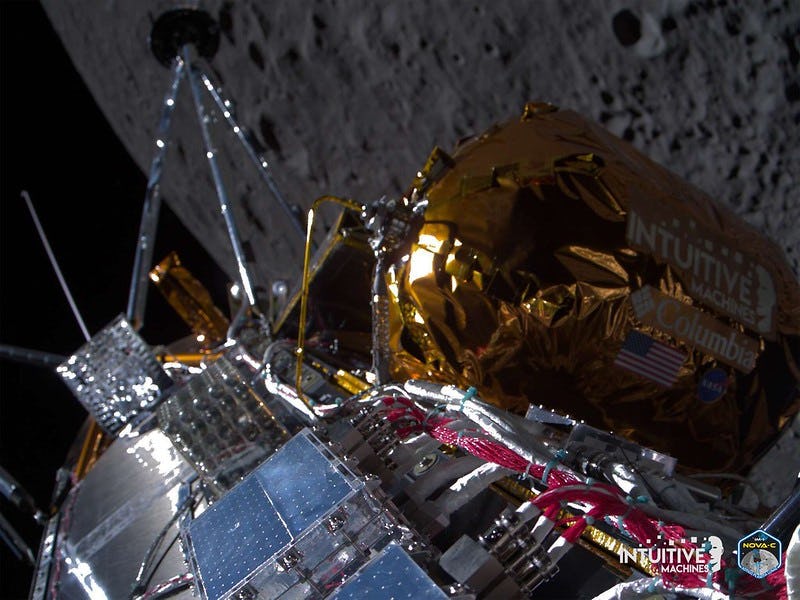‘Odysseus’ Just Performed First American Moon Landing Since Apollo
The landing was packed with drama.

The Moon received a new robotic visitor on Thursday night.
Odysseus, a lander from the Houston-based company Intuitive Machines, landed on the Moon’s Malapert A crater, near the Moon’s South Pole, sometime around 6:23 p.m. Eastern. The 13-foot-tall spacecraft carries onboard a thermal protection shield from Columbia Sportswear, a selfie camera to document its descent, a series of NASA instruments that learned tiny details about how the surface responds during landing, plus a piece of art made of orbs depicting lunar phases from American sculptor Jeff Koons.
This is the first successful mission for NASA’s Commercial Lunar Payload Services (CLPS), an initiative to pay for rideshares on private flights to the Moon to save on costs — and to perhaps access the lunar environment more frequently than if the space agency built out the landers itself.
It’s also the first time the United States has placed a lander on the Moon since Apollo 17 in 1972.
The landing
Intuitive Machines had to MacGyver a tool hours before landing. Odysseus is an autonomous vehicle, so it’s equipped with laser range finders to aid its terrain, and hazard navigational cameras get the information it needs to ace the landing. But when these tools failed, the team flew Odysseus on an extra flight around the Moon. Their solution was to use a demonstration instrument from NASA, called the Navigation Doppler Lidar, as the primary velocity and altitude monitoring system to land safely. The information it gathers would be critical to ensuring Odysseus can decide how to come down and hover to land upright and not tip over.
A faint signal from Odysseus’s high-gain antenna came in more than 10 minutes after the vehicle was thought to have landed. Mission controllers experienced a communications blackout. Mission success was called at 6:38 p.m. Eastern.
Where did it go?
Malapert A is in highland terrain near the lunar South Pole. As a large area free of boulders, it offered a safe place in an otherwise rugged region.
Landing there has a few perks. From a scientific perspective, the highlands are valuable, because they are the original terrain of the Moon, (as opposed to the smoothed “mare” regions made by newer volcanic outflows.)
But this wasn’t always the landing site. The original target was Oceanus Procellarum on the western edge of the lunar nearside. NASA decided last year that Malapert A was a better use of its time. The astronauts onboard NASA’s Artemis III mission could land on the lunar south pole as early as September 2026, and if they do, the agency wants to make sure it can communicate with them at their extreme location.
“Landing near Malapert A also will help mission planners understand how to communicate and send data back to Earth from a location that is low on the lunar horizon,” NASA officials wrote in an Intuitive Machines-1 mission update published last May.
What’s next
Mission controllers will continue to work to keep ongoing communication with Odysseus. They’ll seek to get a set of NASA instruments started on their science work from the Moon, as well as downlink information from its other payloads. The onboard EagleCam, for instance, aimed to take footage as Odysseus descended to the Moon’s surface.